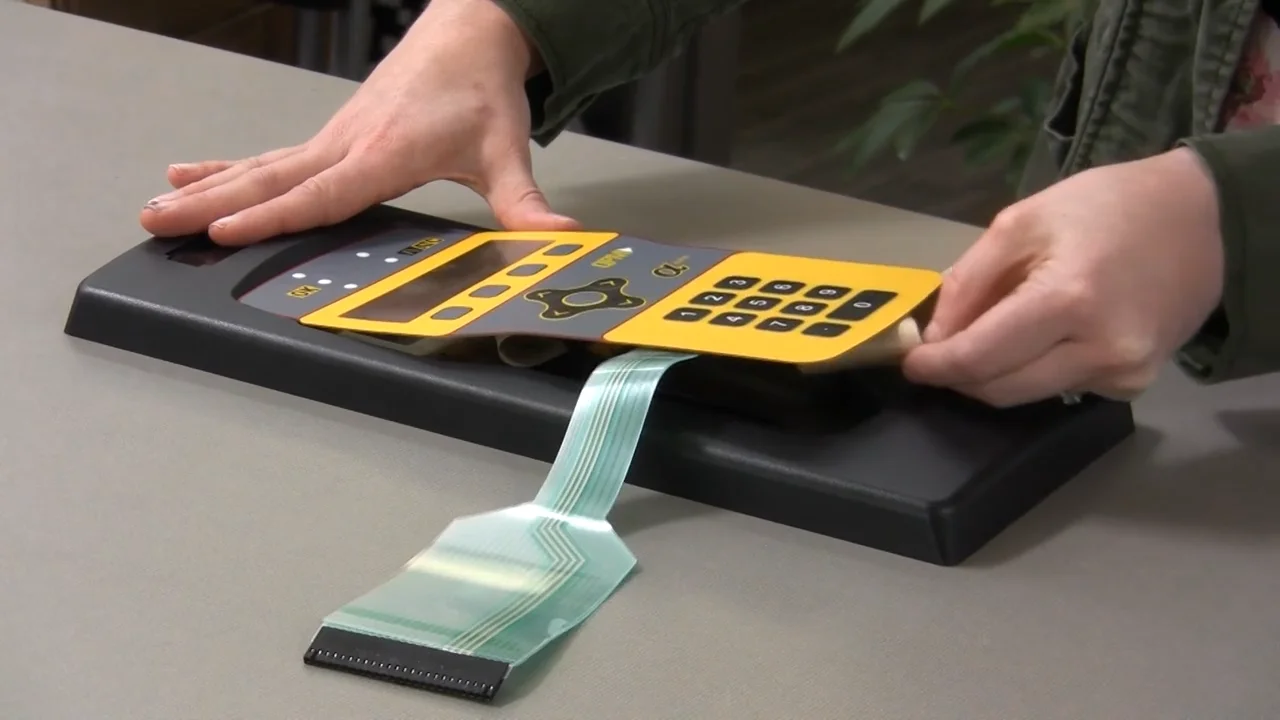Just How a Membrane Switch Boosts Customer Experience and Tool Performance
Wiki Article
Recognizing the Functionality of Membrane Switches Over for Interface Tools
The functionality of membrane switches over represents a significant development in individual interface design, integrating effectiveness with aesthetic flexibility. As sectors significantly focus on user experience, understanding the nuances of membrane layer button modern technology becomes important.What Are Membrane Layer Switches?
Membrane layer switches are innovative interface gadgets that help with customer communication with digital equipment. These flexible components contain multiple layers, including a graphic overlay, spacer, and a printed circuit layer. The design enables a smooth combination into different digital gadgets, boosting both the aesthetic and useful aspects of customer interfaces.
Membrane switches are commonly used in a vast array of applications, from household home appliances to commercial machinery and medical gadgets. Their building usually features a thin account, making them an ideal option for compact layouts. The tactile comments offered by these switches can be crafted to satisfy details individual choices, making sure effective interaction between the user and the device.
Resilience is one more substantial benefit of membrane layer buttons, as they are immune to dust, wetness, and chemicals, which boosts their life-span popular settings. Additionally, these buttons can be customized in terms of shape, dimension, and visuals layout, permitting branding and user-specific attributes. On the whole, membrane layer switches over stand for a useful remedy for enhancing user experience in digital devices, incorporating performance with aesthetic charm in an effective fashion.
Exactly How Membrane Layer Changes Job
Operating on an uncomplicated principle, membrane switches over make use of a layered building to sign up user input effectively. Each switch is composed of numerous layers, including a printed circuit layer, a spacer layer, and a leading visuals layer, which are developed to interact effortlessly. When a customer presses the leading layer, it compresses the spacer layer, bringing the conductive elements of the circuit layer right into call with each other.This get in touch with produces a shut circuit, signifying the device to perform a details function. The design enables for different arrangements, consisting of responsive responses, which can enhance the user experience by supplying a physical experience upon activation. The materials utilized in membrane layer buttons commonly consist of flexible substrates, such as polyester or polycarbonate, which make sure longevity and strength versus damage.

Key Benefits of Membrane Layer Switches

Another article source substantial advantage is their density. Membrane layer switches are slim and lightweight, which makes it possible for suppliers to save room in their gadgets without sacrificing capability. This function is specifically helpful in applications where weight and volume are critical factors to consider.
Additionally, membrane layer switches are immune to dust, wetness, and chemicals, enhancing their longevity. This durability expands their life expectancy and reduces the requirement for constant replacements, causing expense financial savings over time.
In addition, the tactile comments provided by membrane buttons can be optimized to improve customer interaction. They can consist of features such as increased buttons or audible clicks, boosting usability and customer experience.
Applications Across Industries
Interface gadgets utilizing membrane layer switches prevail in a wide variety of sectors, showcasing their versatility and capability. Membrane Switch. In the clinical sector, membrane buttons are indispensable to devices such as diagnostic devices and person monitoring systems, where their longevity and ease of cleaning are critical for maintaining hygiene criteria. In a similar way, in the automotive industry, these buttons are used in control panel controls and infotainment systems, offering a streamlined and modern interface for individuals.Additionally, the customer electronic devices sector take advantage of membrane layer switches in devices and handheld gadgets, where small layout and easy to use interfaces enhance user experience. Industrial applications also utilize membrane layer switches over for control board in machinery and automation systems, highlighting their effectiveness and resistance to severe atmospheres.
In the aerospace and defense industries, membrane layer buttons are used in cockpit controls and equipment, where integrity and efficiency under extreme conditions are vital. Additionally, the gaming industry increasingly includes membrane layer switches in controllers and arcade equipments, adding to an appealing individual experience. Overall, the flexibility of membrane switches allows their extensive use across countless fields, highlighting their importance in modern-day interface style.
Future Patterns in Membrane Switch Technology

Additionally, making use of innovative materials, such as polycarbonate and polyester movies, is expected to increase, giving enhanced durability and resistance to environmental stress factors. These materials add to the overall durability of membrane layer switches, making them suitable for harsher industrial applications.
In addition, the consolidation of clever innovation, including IoT connectivity, will make it possible for membrane switches to interact with other gadgets and systems, facilitating a much more interactive customer experience. This trend aligns with the growing need for clever tools throughout various sectors, from healthcare to consumer electronics.
Lastly, personalization choices are anticipated to expand, allowing makers to produce bespoke options customized to details user demands and choices. These developments will position membrane layer switches as vital elements in the evolution of interface modern technology.
Conclusion
In conclusion, membrane layer switches stand for an essential innovation in you could check here interface technology, supplying a trusted and versatile service for varied electronic applications. Their layered building and construction promotes portable style, while functions such as tactile responses enhance individual communication. The resilience against ecological elements additionally strengthens their energy throughout multiple industries. As advancements in product science and touch picking up innovations proceed, the performance and applicability of membrane buttons are expected to broaden, reinforcing their relevance in modern digital gadgets.
Report this wiki page